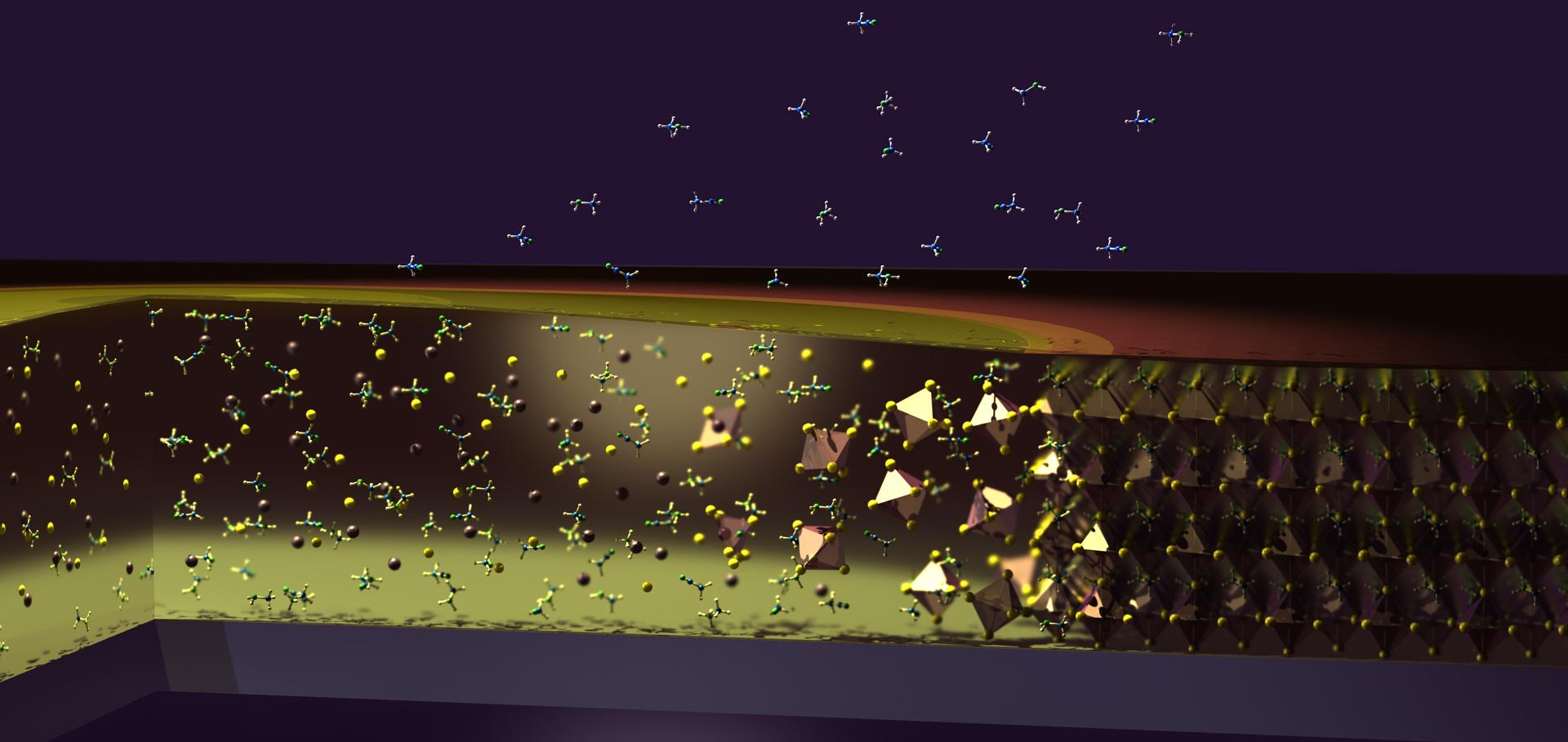Modification of the fluorinated tin oxide/electron-transporting material interface by a strong reductant and its effect on perovskite solar cell efficiency
Molecular Systems Design and Engineering Royal Society of Chemistry 3:5 (2018) 741-747
Abstract:
To date, the most efficient hybrid metal halide peroskite solar cells employ TiO2 as electron-transporting material (ETM), making these devices unstable under UV light exposure. Replacing TiO2 with fullerene derivatives has been shown to result in improved electronic contact and increased device lifetime, making it of interest to assess whether similar improvements can be achieved by using other organic semiconductors as ETMs. In this work, we investigate perylene-3,4:9,10-tetracarboxylic bis(benzimidazole) as a vacuum-processable ETM, and we minimize electron-collection losses at the electron-selective contact by depositing pentamethylcyclopentadienyl cyclopentadienyl rhodium dimer, (RhCp*Cp)2, on fluorinated tin oxide. With (RhCp*Cp)2 as an interlayer, ohmic contacts can be formed, there is interfacial doping of the ETM, and stabilized power conversion efficiencies of up to 14.2% are obtained.Atomic layer deposited electron transport Layers in efficient organometallic halide perovskite devices
MRS Advances Cambridge University Press 3:51 (2018) 3075-3084
Abstract:
Amorphous TiO2 and SnO2 electron transport layers (ETLs) were deposited by low-temperature atomic layer deposition (ALD). Surface morphology and x-ray photoelectron spectroscopy (XPS) indicate uniform and pinhole free coverage of these ALD hole blocking layers. Both mesoporous and planar perovskite solar cells were fabricated based on these thin films with aperture areas of 1.04 cm2 for TiO2 and 0.09 cm2 and 0.70 cm2 for SnO2. The resulting cell performance of 18.3 % power conversion efficiency (PCE) using planar SnO2 on 0.09 cm2 and 15.3 % PCE using mesoporous TiO2 on 1.04 cm2 active areas are discussed in conjunction with the significance of growth parameters and ETL composition.Highly crystalline methylammonium lead tribromide perovskite films for efficient photovoltaic devices
ACS Energy Letters American Chemical Society 3:6 (2018) 1233−1240
Abstract:
The rise of metal-halide perovskite solar cells has captivated the research community, promising to disrupt the current energy landscape. While a sizable percentage of the research done on this class of materials has been focused on the neat and iodide-rich perovskites, bromide-based perovskites can deliver substantially higher voltages because of their relatively wide band gaps of over 2 eV. The potential for efficient, high-voltage devices makes materials such as these incredibly attractive for multijunction photovoltaic applications. Here, we use the acetonitrile/methylamine solvent system to deposit smooth, highly crystalline films of CH3NH3PbBr3. By using choline chloride as a passivating agent for these films, we achieve photoluminescence quantum efficiencies of up to 5.5% and demonstrate charge-carrier mobilities of 17.8 cm2/(V s). Incorporating these films into photovoltaic devices, we achieve scanned power conversion efficiencies of up to 8.9%, with stabilized efficiencies of 7.6%, providing a simple route to realizing efficient, high-voltage CH3NH3PbBr3 planar-heterojunction devices.Carbon Nanotubes - the p-Type Contact of the Future for Perovskite Solar Cells?
ECS Meeting Abstracts The Electrochemical Society MA2018-01:5 (2018) 643-643
Crystallization kinetics and morphology control of formamidinium-cesium mixed-cation lead mixed-halide perovskite via tunability of the colloidal precursor solution
Fundacio Scito (2017)


